Replay of 126. Brooklyn Grange Rooftop Farms | ANASTASIA COLE PLAKIAS | Brooklyn, NY
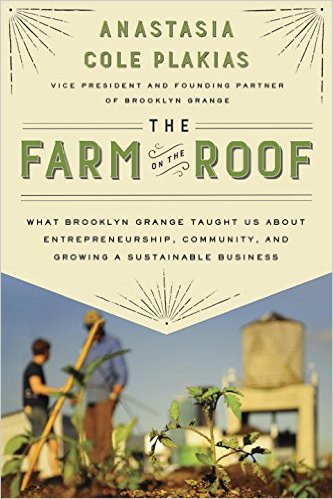
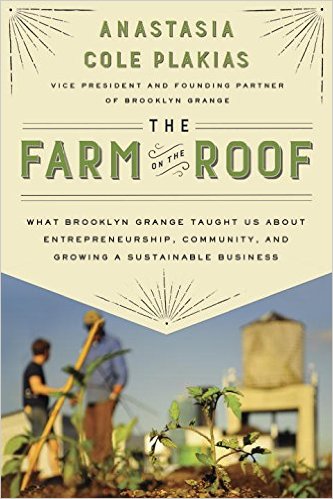 The Brooklyn Grange is the leading rooftop farming and intensive green roofing business in the US. They operate the world’s largest rooftop soil farms, located on two roofs in New York City, and grow over 50,000 lbs of organically-cultivated produce per year. In addition to growing and distributing fresh local vegetables and herbs, Brooklyn Grange also provides urban farming and green roof consulting and installation services to clients worldwide, and they partner with numerous non-profit organizations throughout New York to promote healthy and strong local communities.
The Brooklyn Grange is the leading rooftop farming and intensive green roofing business in the US. They operate the world’s largest rooftop soil farms, located on two roofs in New York City, and grow over 50,000 lbs of organically-cultivated produce per year. In addition to growing and distributing fresh local vegetables and herbs, Brooklyn Grange also provides urban farming and green roof consulting and installation services to clients worldwide, and they partner with numerous non-profit organizations throughout New York to promote healthy and strong local communities.
Today ANASTASIA COLE PLAKIAS author of The Farm on the Roof: What Brooklyn Grange Taught Us about Entrepreneurship, Community, and Growing a Sustainable Business! shares her journey with us!
Anna Peach from episode 105 said she learned a lot of her techniques volunteering at the Brooklyn Grange.
Tell us a little bit about yourself.
I love the context! It’s exciting to hear when folks have some connection to Brooklyn and NYC, because you have an idea of the space constraints we deal with as urban farmers. We really don’t have a lot of space. That’s really where the cofounders of this project were starting up a commercial scale rooftop farm. We were all practicing urban agriculture as a hobby in small spaces.
I had a friend who had a restaurant called Roberta’s in Bushwhack and they wanted to grow some food for the restaurant, for the kitchen. So they built raised beds on the top of some shipping containers in the backyard and they actually house Heritage Radio Network, so there’s some connection there on the internet airwaves… so we’er growing just a little bit of herbs, mostly garnishing things and when we did the math on how much time we spent to build them and cultivate and there’s not that much output.
We realized this might not make that much sense we needed to Scale Up! Of course that’s so difficult to do in cities. My partner Ben had opened a small farm, 6000 square feet in Brooklyn, Eagle Street Rooftop farm, I call it small because our second far here at the Brooklyn Navy yards is 65,000 sq. feet. So Eagle Street by comparison is a bit smaller, at the time we thought look at all that space!

6,000 feet for all of you ground level farms.We’re talking a fraction of an acre. An acre is 42000- or 43000 sq feet. (43,560) So size is truly in the eye of the beholder. At the scale we were producing was much more of a hobby. We wanted to prove that urban agriculture could be practiced as a business and is worthy of investment and could be replicated all over rooftops, all over cities, all over the world!
Tell me about your first gardening experience?
So, this is a funny one, I grew up in the west village in Manhattan. I obviously wasn’t exposed to much to gardening in my urban childhood. The limit of my experience of having my hands in the soil, where we grew lima beans in elementary my school and burying the family hamsters and parakeets in the tree pits outside our apartment building. That was pretty much how often I got my hands in the dirt.
But I was fortunate to have a mother who took the time and had the luxury between her part time schedule to shop and cook with my sister and myself. She would take us to the farmer’s market for our vegetables, and to the butchers’s shop for our meat. She took us to the fish monger for our fish.
So I really did have a very different experience with food when I was growing up then so many americans who do that one-stop shopping at the supermarket. And aren’t as connected because of that to the source of our products. Even so, if you were to ask me where did our food come from?
Our fish came from Sandra, Sandra came from Montauk, that was pretty much the extent of it. Where did our produce come from? Our produce came from Gary and Gary came from the Hudson Valley, butI didn’t have an concept what that meant.
It wasn’t til I went to school in Poughkeepsie in the Hudson Valley Vassar, I walked into the cafeteria and I expected to see what I saw at the Union Square Green Market in September, a bounty of fresh ripe Heirloom tomatoes, and crisp greens and the first cooler weather brassicas. Instead what I saw was iceberg lettuce that had been shipped from thousands of miles away on big contracts. That was the beginning of the wakeup call for me and the realization of just what a privileged life I live. Just how broken our food system really was.
So I just have to ask are you millennial?
IDK, it seems like who you ask. I’m 32. I’m sliding in there if I’m in there at all, but we do work with a number of our team members who are in their mid twenties? I feel like I’m down with the millennials. I’m in with the abbrev.. I feel like I have that connections now matter how tenuous!
My mom and my husband are like, we are learning to figure out your texts, but we’re getting it. I think there’s something special about the people who are between 30-40 right now. There’s something in that group of people. And in my podcasting group, John Lee Dumas is always talking about their avatar and who your perfect listener is? I said I’ve had my avatar on my show as my guest, and I can tell already and by reading your website! You’re definitely my type of avatar.
We think about too. When we we’re pitching it. If I am your avatar I’m guessing we’re trying to speak to the same crowd. Which is youngish folks, if I can still call myself young, yeah?
There’s this gap of knowledge between generations … Our grandparents kept gardens and I think a lot of parents didn’t… depending on how much time you got to spend on your grandparents garden, you may have not received that information. So there’s this renewed interest in growing and homesteading and home economics. but there’s this dearth of familial knowledge so its got to come from somewhere else.
I actually talked to this guy, his name is Peter Vasilis, his daughter is Alethea and Erin, they have a little non-profit there called Orkestai Farm. And he does farmer’s market out in Orient Point. He said when his dad came home, they were all excited, look at this new thing! No more weeds. It was like this big new technology.
I also think about my mom, she’s like, I don’t get this organic thing, it’s just a money thing… I don’t think she realizes the big difference in food grown in the 70s compared to today. And I just wanted to say something about we had this huge seed fair, and we were expecting like 300 people and 1600 people walked through the door.
We were talking about nutrient rich food. Andrew Malucelli, just a few weeks ago. I really thought my husband was gonna be teaching people doing the podcast, but my listeners want to hear from you.
I think my listeners are wondering how to do things effectively and efficiently because I’m always working and how hard it is to garden some times and I think also about growing in the city, I love my house but whenever it feels small I think about my aunt in NYC raising two kids in a small apartment and how you have to be efficient.
The tiniest of tiny apartments in the West Village.
How did you learn how to garden organically?
It was not an obvious journey, I came to farming through a love of food. I followed my pallet and my appetite to farming. Part of it, was like what you said, people you want nutritious food. It wasn’t the easiest step fro me to take….
I was such a city kid, I mean I was afraid of bees, I was totally lost in the garden. I was really fortunate I was working as an assistant in the restaurant industry and I was working to a pretty big deal restauranteur winemaker. And I learned right way how to get things done very well.
So when my buddies said they’re gonna this, I was like where are you gonna get the soil how are you gonna get it up there? I thought it was inspiring. I loved this notion of just doing it! It was something I never thought of before
this liberal arts educated mindset
- observe
- plan
- comment
- contingency plan
So I was sort of stunned by their cavalier attitude, so I set out to make systems to help the project more smoothly. It didn’t go super well, I need to
ran into my now business partner
Gwen s
not more then an acquaintance. 2 years ahead of me
been buy her place in
Post Brooklyn had a handful of herbs growing in her kitchen.
- her now husband Christopher St. Johns
- enlisted her help in the garden at Roberta’s and the next thing
- the guys hired her as their pizza chef
- put together lists for me to bang out.
I’d have this detailed

rooftop farming
When we met Ben Flanner, who was running Eagle Street,
we started having a lot of conversations and working on a project together, when we did launch Brooklyn Grange, it was really the three of us at first
we brought a couple of folks on board, really I worked really closely alongside Ben
I learned almost everything I know from him. That was where I learned an important tenant of farming any good farmer must also be a good educator
I know not all farmers will not be delighted to hear that, because they would spend time with plants then with people. In some way shape or from
taking on novices as staff
as apprentices
writing a book, or maybe having a podcast you really have to help spread your knowledge at this point.
And we need more podcasts, so if you’re thinking of it, I’ll talk to you after. Also There’s a woman who rote LENTIL Underground you should connect with Liz Carlisle. she went to UC Berkley…
I think there’s this big fear of the older generation, there’s a fear of social media, etc. But when you get there and you start to share your knowledge and see people appreciate it.
One of the threads of my show is definitely soil health?! And how do you get your soil up there!
Yeah, soil health, the idea of swapping out all that soil, that’s not tenable. We bring
1.2 million to our
even more to our
Where do you get all this soil?
It is averrable they have a couple
A company called Rooflite
an acre in Long Island
it is available
local blending
they have a great story
it all started with Mushrooms
not because the soil particularly good for mushrooms.
Italian queries
went to work for dutch tulip growers
the tulip growers started growing mushrooms under the shelves in the greenhouses and the Italians learned this trade, brought families over growing mushrooms
started mushroom growing
this Italian
Mushroom journalist
Tess Burzynski maybe it will be her project. Graduating form Detroit Michigan, gonna graduate and go to the peace corps. Has a mushroom business.
scoop her on it…
these guys are a wealth of knowledge, and they’re also farmers
farmers are naturally very resourceful people, naturally, want to use thing
don’t like to waste
always thinking about tour bottom line
when you grow mushrooms in compost you get one flush and then the compost is not useful for you anymore for
not useful for growing mushrooms anymore
however it’s good compost if it’s managed correctly but managing compost
you have to put some thorough into it, and you have to throw some resources
ending up with this tremendous about of
not having an luck selling it as potting mix
really just dumping it,
you could drive around this area of Pennsylvania, you could drive around and these huge mountains of compost sitting around
Girder out we need to use this waste and make some more on it.
formed a cooperative of mushroom growing business,
composting properly, really managing ti
incredible operation
take this spent product and turn it into great landscaping product
a green roofer was approached about putting together a soil blend
on green roofs
was not quite sure what it was gonna look like, but he was sure it was going to need to rain well,
that’s important
don’t want your roof filling up like a
bath tub
mixed aggregate
our roof top growing mix
intensive ag blend which has a higher proportion of organic matter then the blend they would recommend for just sedum or recommend for native grasses a lighter feeder, then your garden variety vegetables
how can we improve the soil ecosystem, because with drainage comes a because with that increased porosity, you awls find that your soil dries out more quickly, especially when it’s pounded by,s o we have to irrigate.
we found that drip is not the most efficient
not that capillary action, so it spreads the water through
if it was less porous
articles were smaller, when the sun is low in the sky
especially on our greens beds and other spots where we’re not putting our plants onto of your direct line.
 You know those little sprinklers
You know those little sprinklers
stationary
hit a certain area
wobblers produce
and distribute them in a gentle rain like pattern
specific type
they don’t shoot water up as high
you’re not losing as much
folks moved out to San Francisco
in the middle of
historic droughts in Northern California and I’ll be out there during one of these historic droughts and you would have no idea that’s what’s happening because there’s water shooting up in the air on all these farms. It seems like water is going to be increasingly the conversation that you should be having in farming. And can we contribute tot the conversation so that we learn how to store water
in soil that doesn’t want to store water
how can we adjust this soil that it continues to drain….but it has a better capacity?
Yeah,
it’s very much a work in progress
working with Cornell University. right now we’re still very much in the data acquisition process. We tend to be transparent, we want folks to know we are a work in progress and then we share what we know and as soon as we have more to say on that, the world will figure it out.
still very much in the fact finding stage.
So let’s talk about the grange… What are you doing with all the food that you grow?
3 main sales channels,
totally standard
vast majority crops are being sold wholesale to chefs and small mom and pop growers. That’s because its so much more efficient
endless number of wholesale accounts within a 5 mile radius of our farm.
so fortunate
the most profitable thing we can do is sell baby greens salad mixes, and arugula, to chefs and grocers. WE also have a 45 member csa and 2 weekly markets – Saturday and Sunday market. WE try to be thoughtful of what we grow.
diversified
lean heavenly towards
things don’t keep the lights on
2 months in the green house and then 2 months in the field is so much less then one beautiful tomato. So we are cautious about what we grow in our small space
try to keep our prices reasonable by being mindful of how we sell that produce.
So I use the example of basil
sweet basil, our Italian basil, that’s really our retail basil. If we bring it to a farmer’s market, people are gonna buy bunches of it. When you buy a $2 bunch of basil.
If we were gonna wholesale that basil for $6/lb
time to take to see the per square foot, to plant, to harvest and pack the crop
if you charge chefs that much for basil, they’re gonna think of you as that expensive farm, because they are getting pallets of basil
most often from the middle east grown hydroponically or from the amish
We make sure every square foot of that acreage is producing a certain value!
we don’t wholesaled our basil
lime basil
if we bring it to the farmers market and they’ll say what is that smell?
It’s great in melon salads and spring roll! And the;lll say that’s amazing! And they buy the Italian basil because they don’t now what to do with it. You know who buys it? Pastry chefs and bartenders
they are willing to pay wholesale at a premium
ours is super fresh because we’re able to
not just what we grow but considerate about what we grow how we sell that product…
I was an english major, I read a lot of books. I continue to read a lot. There are so many amazing authors out there writing about farming and gardening.
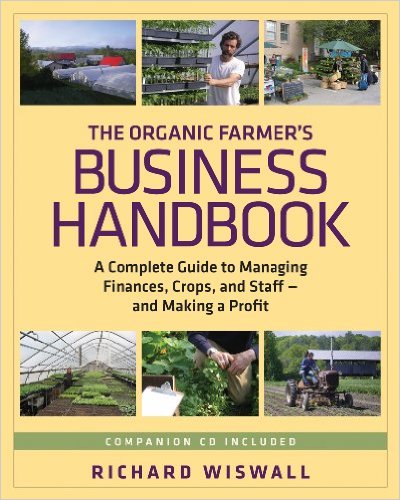 I think Richard Wiswall Organic Farmer’s Handbook as just a crucial piece of literature for anyone trying to make a book or 2.
I think Richard Wiswall Organic Farmer’s Handbook as just a crucial piece of literature for anyone trying to make a book or 2.
I love everything Joel Salatin the ethos behind running my farm, and I quote him because nobody says it better
Eliot Coleman says
We’re really fortunate from to be just down the road from Annie Novak she was Ben’s Partner at Eagle street
she runs that
Growing chefs
botanical gardens
She just wrote a book
 The Rooftop Growing Guide and that is the whole compendium on growing on Roofs.
The Rooftop Growing Guide and that is the whole compendium on growing on Roofs.
there’s a whole cannon of super literature
out there, the lessons that stick because you learn them in a trial by fire way
we definitely composted a lot of lime basil because it did not sell,
lost accounts thinking I could sell Italian basil for $6/lb because I thought I could get away.
Tell us about your book!
Yeah! Our we’re about to embark on our 7th season
we’ve definitely made
Our website is incredibly rich of so I do urge people to check it out if you’re interested in learning more:
the about page and FAQ alone are super super informative!
The book is called:
 The Farm on the Roof: What Brooklyn Grange Taught Us about Entrepreneurship, Community, and Growing a Sustainable Business!
The Farm on the Roof: What Brooklyn Grange Taught Us about Entrepreneurship, Community, and Growing a Sustainable Business!
like I said, I think there was such a
When we spoke with Annie and she said she was writing her book, that is what made perfect sense for us to focus on how to make this business work. I mean its an amazing thing, not to toot our own home, but it’s kind of incredible that we’ve made this business work!
2 1/2 acres is not a lot of land and anybody knows, who’s grown anything before whiter it’s if its a small plot of large farm knows how much of a cushion for error, how much room for error you need.

We really wanted to share with the wider world that, our experiences as small business operators, serving our local community, have been really really positive and we really want to encourage other folks out there to start a small bugs of their own, whether it’s a farm or garden project, or not even food related!
The bottom line is I think there is a little bit of discontent between people’s idea of success, especially Liberal Arts educated college grads whose parents have paid a fortune for their education or have taken out a tremendous amount of student loan debt, they feel this pressure to be successful, but they want to create positive change!
And those two things can seem to be at odds, can seem to be, because our definition of success has been very much screwed by internet startups and tech startups. You hear these stories of he started a tech startup and 3 years later he sold it for $5 million dollars and then he’s starting another one! And that’s what we think of as success, but there’s something so rewarding about running a business that serves it’s community.
When I get a note from a CSA member cooked a meal and it was cooked with 100% from produce from Brooklyn Grange vegetables and it was the most beautiful year they’ve had in recent memory! That’s super rewarding that’s the super ultimate!
When we treat ourselves to dinner what ever couple of years and we see our vegetables are coming out on our plates! And get off the farm and go out every once in a blue moon!
we are proximal to our customers
part of the same community that they are
able to partner with the non-profits
we’re consulting internationally, at this point we’re flying to sitting around the world and helping them build rooftops on their own…
local
no how many consulting gigs we do in how many countries, our 45 CSA members are always going to get an immediate reply to their email, and personal response if their
because i twas pounding rain when were harvested them, tangible connections
encourage other people to give that a shot as well.
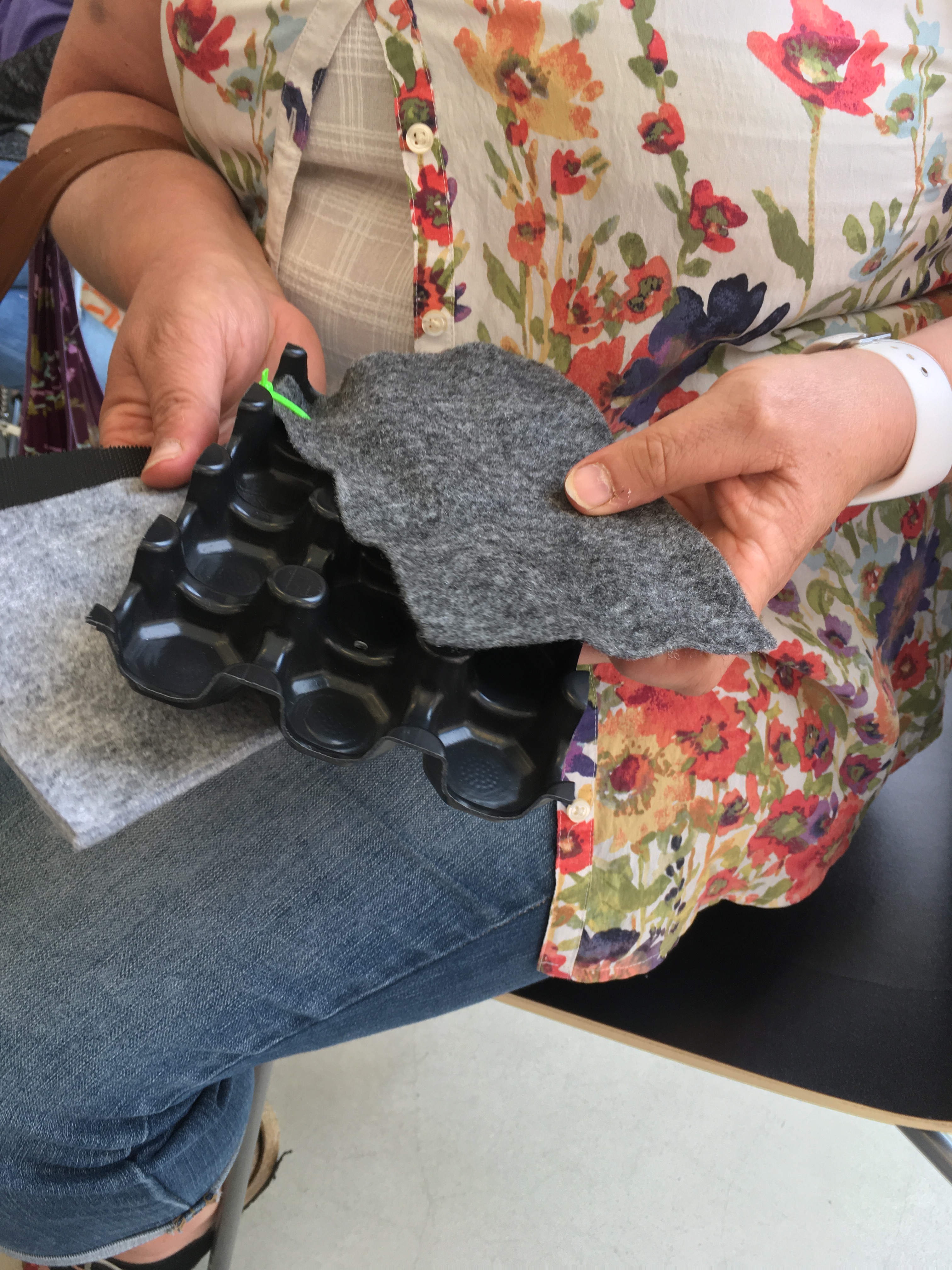
First steps
What is the first step to getting that dirt up there?
Depends on the roof
it’s not always the easiest
before you put a spec of dirt up there, you want to get an engineer.
make sure the roof can support the weight.
once it’s all up there, it’s heavy it’s gonna get rained on,
So you calculate the weight of the soil, fully saturated and make sure the building can hold that weight?
pre-war industrial buildings
for large projects
you can do smaller things
raised beds
For a parapet wall to parapet wall, rooftop farm
haven’t gone on line yet and looked up a photo of our farm, you got to picture a small rural organic farm, just plopped on a roof, there’s no boxes.
you have to picture a small rural organic farm proper down on a roof
there’s soil
green system, that protects the roof for from the plants
small stones
and a drainage layer,
drainage mat that’s sort of cp system
sandwich acts like a giant sponge. It i keeps a
slows down the rate the water passes through our farm, and the pace it hits new York’s sewer system.
Will engage a crane to crane up super sacs, there giant 3000 lb. bags of soil, and drop them directly onto the roof and dump them up, or we will engage a
open them p
blower truck,
conveyor belt like system
has a big hopper on it, basically brings soil form this big pile
shoots it up, all 11 stories of that building, and they are tall stories, up on to the roof…
What are most roofs made of? Seems like there’s tar paper up there.
There’s a lot of nasty stuff on roofs. That’s one of the beautiful thing about rooftop farms.
our very first season
I noticed there were a ton of butterflies up there
there was one day up there, I was planting, I was thinking I felt like I was in a disney movie
why are there so many
Turns out Butterflies can sense temp difference from a distance.
more then a park a ground level
so much cooler then the other
because they are made from things like
and then sunlight and admit it.
incredibly hot surfaces and
in summer in the the day, yeah it’s just hot up there.
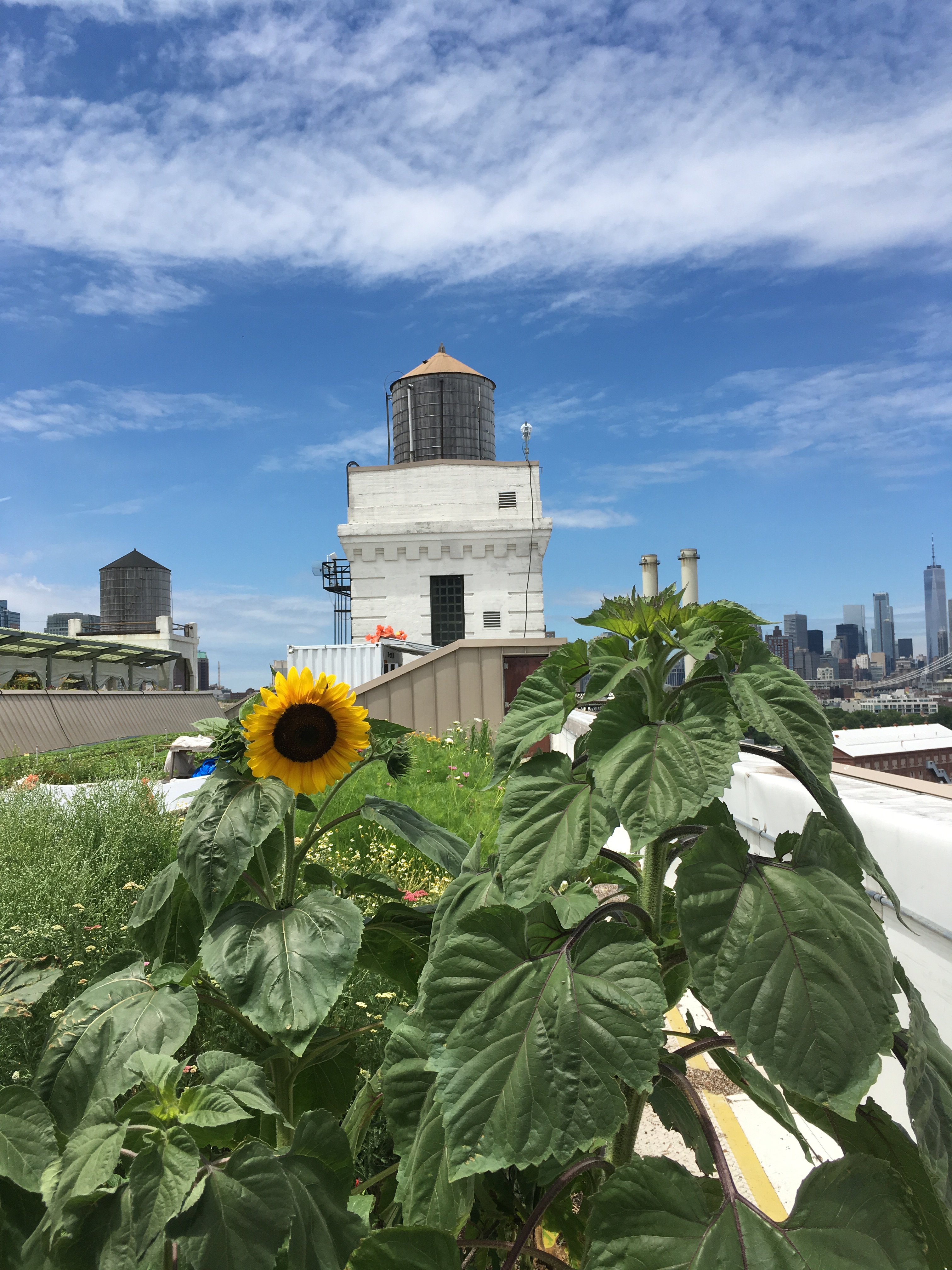
reasons
We’re experiencing urban heat island effect, it never cools down at night
disputes the cleaning capacity
cooling this vegetation up there on there roofs.
Roof Surfaces
The surfaces of roofs are interesting thing.
if you have a brand new roof membrane, the membrane that prevents rain from coming through the roof you may not need to use a roof barrier.
roll out a roll of root barrier, it’s just a thick black plastic, roots can not get thru it roots
access the surface of the roof
system
protests the from from uv rays, they say it will extend the life of a roof membrane up to 4 times. I don’t know anyone who’s had to tear of a roof that’s covered
no UV damage being done… and that’s the life time
I know Bill Clinton was big about rooftops because it was gonna cut down the air conditioning bill.
theres some research being done by Stuart Gaffin I think he’s at Columbia University. He’s a leading researcher on the benefits on the gardens
- reduction of heating and cooling
- giant comforter in winter like a blanket on your building
- in summer acts as a intermediary between the roof and the sun.
the sad fact of the matter is for most buildings, especially large buildings are probably charging for tenants for the heating and cooling costs, really not concerned about those numbers. They are rounding errors for them.
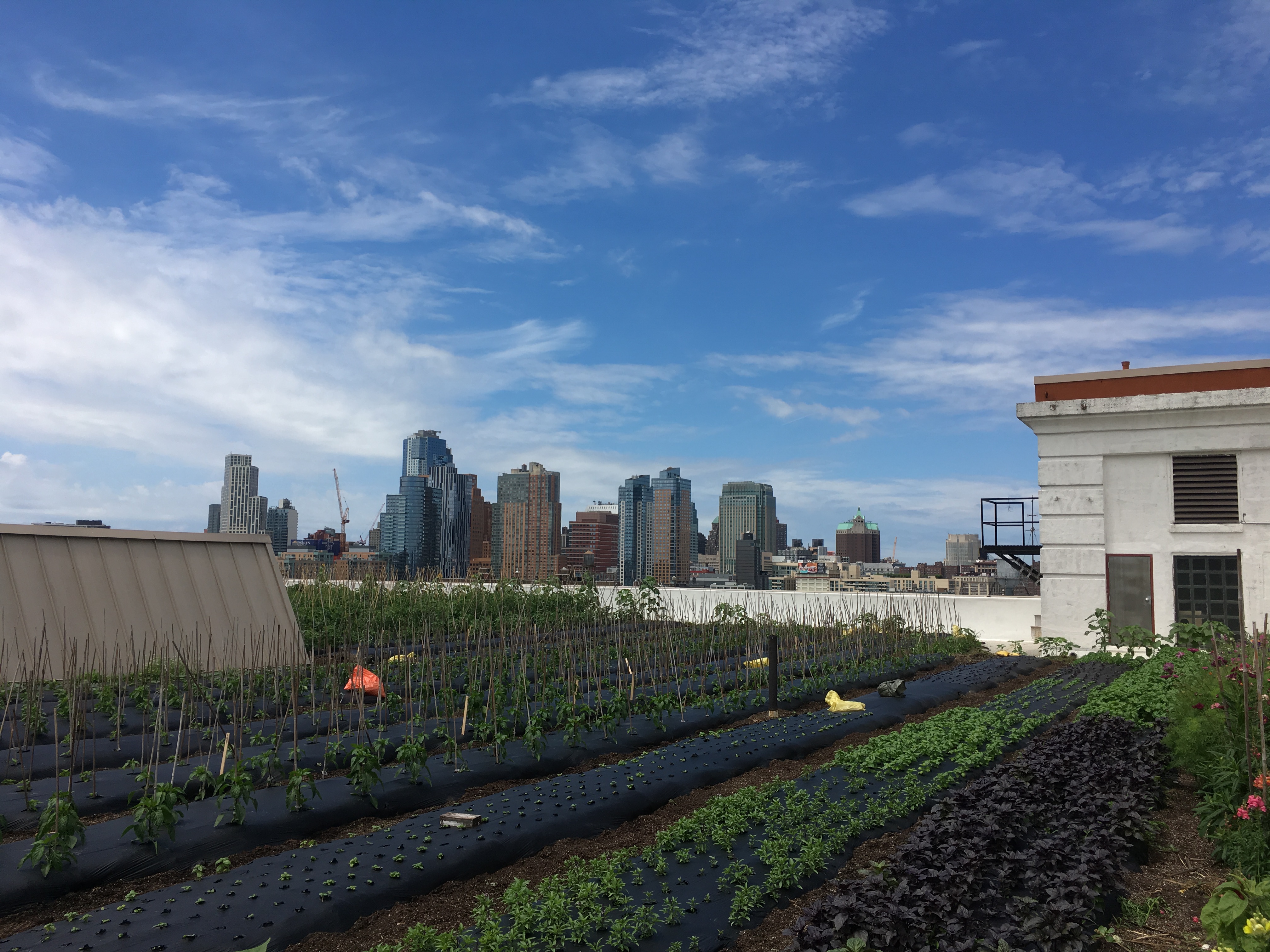
Really it’s cities who need to be proactive and forward thinking and take action on incentivizing these green roofs.
They need to take forward action. They have been, NY especially!
NYC, has a tax abatement
They have a one time tax abatement, up to $100k the install year of a green roof. And the Department of Environmental Protection of NYC offers
green infrastructure storm water storage grants
yeah, that’s great but you don’t have to be an non-profit
anyone to get them, they encourage anyone who can add a green space that will absorb water.
to
sewer system
less people using toilets, flushing taking showers
We’ve built the city up so much most of it is covered by impervious surfaces like concrete and so when it rains, all of the is directly related to the drains
When it rains heavily and the system that processes rainfall is overwhelmed.
In order for that water to not back up in the streets we combine our systems
- forced to vent some of that Combined Sewer Overways (CSO)
- directly into local waterways
- not a specify NYC, it’s a problem all over the world.
it’s not a sexy problem or one people want to talk about.
Nobody wants to talk about the poop floating in the bay. It’s a real problem.
NYC has been particularly has been particularly smart and proactive and they looked at the positive effects of adding green space and the costs of doing so, and they realized that it would be far more efficient to increase the green space in cities and absorb the slow down some of the rainfall allowing the sewer system let it catch up with impervious surfaces.
before that rainfall
that’s a little bit of green infrastructure geek out.
NYC Dept of Environmental website
It’s exciting you’re seeing in practice in Paris with legislation, really requires green roofs on building of certain sizes! You’ve seen it for years in Chicago has a green roof in its city hall! NYC is not alone in valuing green roofs and green spaces.
nice
trees planted along sidewalks parks
much appreciated by practitioners like us.
What does the book talk about?
Our business intrinsically at it’s core is a triple bottom line business
3 ps: Profits, Planet, People (and Partnerships)
Profits
financial bottom line we wouldn’t be here if we don’t make a profit
planet
how can we use less water
adapt our soil so we hold water better
people
We really really want to always make sure that our mission to respect all the pillars, we stay true to that.
The book talks about
- the importance and strategies to remain fiscally profitable
- raising money
not easy to do in 2009 not easy to do still on the on heels of that 2008 recession. A lot of people didn’t want to pony up so I talk about how to be creative with fund raising strategies.
The importance of keeping and analyzing data and knowing the important numbers to keep yourself profitable.
We talk a lot about people
how to create
actually introduce 4th p! The 4th P
Is Partnerships!
introduce partnerships
It’s hard to succeed as a small business across all three of these fields. You see all the time, a business that can come in with a highly environmentally friendly process that will increase productivity and decrease our environmental footprint but it puts a ton of people out of work.
Or a business will come into a community and create a ton of jobs, but it puts toxic waste into the waterways.
You’re gonna be much better at 2 of the 3
So you partner with organizations who excel at what you struggle with and who struggle with the things of which you excel.
So it’s tough enough to be profitable on 2.5 acres. We are necessarily focused on that and of course we’re an urban farm, so
ecology and ecological sustainablility is at the core of what we do.
people is a little bit trickier, we wish we could donate 1/2 of our harvest with produce but it would affect our bottom line too much.
So how do we give back to the community?
a lot of it is education. And that’s certainly part of it.
We do a lot of workshops and classes of which we barely break even because we feel it’s important work. We also founded an educational non-profit
It was born from the communities’ desire to bring youth up to the farm to learn about
food and farming
I was doing all of these visits in 2010, I am not an educator but what I bought to the table was I grew up as a NYC kid!
When these kids come up to connect that this green stuff coming out of the roof as food. We don’t associate food with something that grows. We associate it with something that is in a package on super market shelves. This is important work we are doing.
Schools starting asking when they didn’t have the budget for a field trip fee. I started doing pro bono visits and it started to add up. But moreover
I was not equipped to answer these though questions like:
how did the chickens lay eggs without a rooster

Got Citygrowers 501c3
 Ellice Lee has made a is a woman who works as an illustrator in publishing. She has taken that organization made it a huge part of her life. We got a small operating grant that covered we got a small operating grant that was enough to hire a director for 6 months of one person.
Ellice Lee has made a is a woman who works as an illustrator in publishing. She has taken that organization made it a huge part of her life. We got a small operating grant that covered we got a small operating grant that was enough to hire a director for 6 months of one person.
 And that woman is Cara Chard and she has grown that tiny organization into a really wonderful education non-profit. And she has brought 22,000 kids up to our farms!
And that woman is Cara Chard and she has grown that tiny organization into a really wonderful education non-profit. And she has brought 22,000 kids up to our farms!
is a primary example. They handle all of the education on our farms. They
- don’t handle lease negations
- irrigation system is malfunctioning
- don’t build green houses that we grow our seedlings in.
We let them focus on what they are really good at which is educating young community members about food and farmers. They do that part of the work for us. It’s always been part of the goal, it was just something we could not do, we couldn’t make it happen on our own. But instead of throwing up our hands and saying we can’t do that for our community. So we forged a partnership to make it work.
How do you bring 22,000 kids to your farm and get any work done?
That’s the beauty is Citygrowers is taking care of all of that
leaving us to grow a profitable farm that has an ecological
focus on the ps that we’re really good at
they take o n the third p
They are not the only partner that is using our farm to give back to the community.
Refugee immigrant fund (RIF)
We also work with a program called the refugee immigrant fund. It allows refugees and asylum seekers to come up and to learn about gardening and farming and also basic power tool skills, and others farm related skills and english language skills.
They join us for a couple of hours a day, once a week. What we don’t deal with writing the grant proposals to get that funded. That’s what RIF does. We are left to do the not so easy task of running a small farm sustainable and profitably! Our partnerships allow us to also give back to our community.
Choosing the Right Rooftop
Where do you get your roofs from, do people donate them to you?
One would think No we lease our roofs, we pay rent up there. It’s not easy to find a roof.
do you do anything with flowers
we lease our roofs, we pay rent up there. We see a lot of stinkers out there
roofs right under a bridge, where you’re smelling the exhaust, and you don’t want to put a farm up there and brake pad particulate matter that builds up. Nobody wants to eat that food!
There are a whole list of criteria of what makes a great rooftop for a farm
For our purposes, we look for something big, strong. We look for landlords who are excited about the project. Who won’t mind 1000s of kids coming through. Who won’t mind our wedding clients bringing 150 family and friends up to the roof for their wedding. WE have yoga classes. That cultural aspect is important to us so we look for buildings that are excited by that rather then be annoyed by it
- nearish to a community
- Near a school so we can get the cultural aspect is so we an get CSA members
- centrally located
- Not in some industrial area where nobody lives.
Another tough part is roofs are so often interrupted every 20 feet by heating ventilation and Air conditioning units, HVAC units and vents and fans and exhausts! That can be really challenging to farm around. It’s incredibly hard to find a large roof without these mechanical units.
When you think about a farm, you think about pushing that seeder down a long row, if you have to stop to go around an havoc unit it starts to break up your workflow.
That’s been a challenge to find a relatively un obstructed roof
We understand that every rood is going to have a certain amount of mechanicals.
We really do look for ones that limited numbers of mechanicals or mechanicals that are grouped around. Something a ground level farmer would ever imagine, I’m sure!
I can’t imagine! So what’s your vision for the future. Do you see cities covered in green roofs? If someone’s just renting a rooftop garden on their building, like I have relatives that live in NYC, but would it be feasible for them to put a garden on their roof? Do you see them on every roof that can have one?
I think that it depends
Certainly green roofs will continue to pop up on buildings on top of the roofs around the world. I think a lot of them will be rooftop farms because if you are going to put the green roof materials up there why not get a return from them.
First of all, I hate to burst any bubbles
urban farming is never going to feed entire cities we will always rely on rural family farms. That’s so important to know.
certain idealism totally self sufficient
You know for people that want to grow a tomato, or I always talk about kitchen garden full of lettuce or a salad garden and things I eat ALL the time. Easy things that are easy to grow that I eat all the time.
Future for a lot of people
more and more people are getting more excited about growing their own food! I think people feel increasingly alienated and want to have a sense of agency
increased interest in both cities and rural areas
We will see increased individual gardens
We have a design and installation arm of our business. Where we install gardens for private clients from homeless shelters to Vice Media’s headquarters. We’re seeing an increased demand in businesses across the board.
advances in agriculture were already seeing aeroponic and hydroponic popping up all over the place.
I think the future of urban farming is a bit of patchwork of different methods. I think it will continue to grow for all of the reasons it is around in the first place. The sense of
food insecurity
This desire to be closer to the process. Cities are gonna continue to sprawl farther and farther. As far as Brooklyn Grange we will continue to grow our business. We will expand to additional rooftops, we will help others get their own rooftop farms off the ground.
I hope and dream is that at some point in the future we can build a green roof farm and kitchen that is the greenest and most sustainable system food production and processing system out there.
That we will really break some new ground in how to integrate food production and food processing….
You’ve shared a ton of golden seeds. I’m pretty sure my biggest population of listeners are in California but then it’s Texas and NY so hopefully you’ll get some nearby listeners. So can they visit anytime? There are volunteers too!
We definitely open the farm every Saturday 11-4pm. That’s our Queens farm in LI City Queens. That info is all avaialable.
Those hours are seasonal. We’re open late May thru October
On those open days, folks can get their hands dirty alongside our farm stand, they can check out the green space and admire the view.
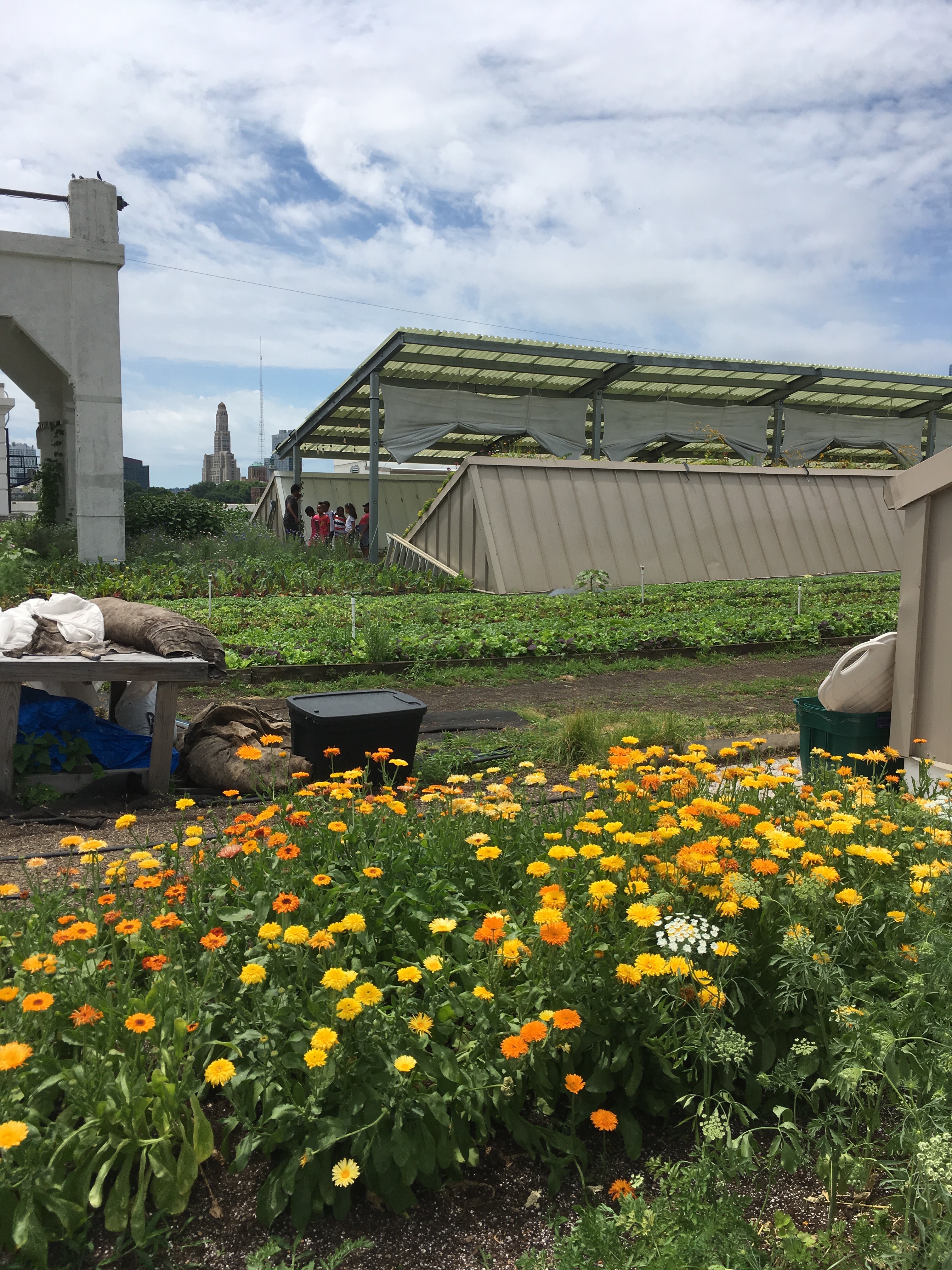
Does it cost anything?
Nope, it’s all open to the public
Does not require any pre-registrations.
We have:
- amazing workshops classes
- dinners,
- all sense of events
- a natural dye
- working with smug time a mushroom
- Monday night at our Brooklyn
I know the view is incredible but I urge folks who want to give back to check out one of our non-profit colleagues.
added value
Look for a farm in their own community, get involved and get after it.
really enriching
Final question
If there was one change you would like to see to create a greener world what would it be? For example is there a charity or organization your passionate about or a project you would like to see put into action. What do you feel is the most crucial issue facing our planet in regards to the environment either in your local area or on a national or global scale?
I think that’s huge. The more connected we are to the planet, the the more invested we are to keep it healthy.
I also really urge folks to keep politics out of the conversation about climate change.
It’s so hard, obviously food and politics just don’t go together really well.
it’s just not the same conversation,we need to be talking about the environment about a way that is apolitical and make it a human issue not a party issue.
The next time you are with someone who doesn’t share your common views, and see if you can’t come to an agreement that positive change needs to happen. It’s tough to do. It’s a hot button issue, but if we can find language to talk about it in a way that is bi-partisan, we might actually make some progress and it’s essential that we do so.
We can not keep putting it off, we need to make changes immediately! That’s my hope for this next reelection cycle. Taking the politics out of the climate change conversation. Taking some immediate action!
Just get out there and vote and vote for more then just president. It doesn’t matter who you are or where you are. Everybody’s vote matters, it can be screwed by just the littlest amount.
Do you have an inspiration tip or quote to help motivate our listeners to reach into that dirt and start their own garden?
I’ve got a copy my book right here, I will say,
How exciting! Who published it?
Avery, a small part of Penguin.
I’m an aspiring author/illustrator.
This is something we talk about towards the end of the book, that I urge, the listeners in your podcast are in interested in organics and organics is all about cultivating a healthy ecosystem of soil microbes.
this is so apropos with what we were talking about voting, and every day we vote with your fork, and the political power of the dollar
the money you spend that ow give to support business is feeding into a business ecosystem and in the book we talk about the
towards the end of the book I write:
“an ecosystem is defined as a group of interconnected elements formed by the interaction of a community of organisms that community can exert change on it’s environment. That community of organisms can exert change on it’s environment. The stronger those interconnections are, the stronger an influence the community can exert.”
I would just ask to all the small businesses out there to try to partner with the other businesses and organizations in your community. To all the individuals try to think about the businesses you’re supporting. Let’s try to make these connections more often and create an even stronger network. If the business ecosystem can become a strong one we can make it a healthy one and feeds it community.
It seems like everyone is talking about is their launch? Is there a thing like you want them to buy it, and review it and buy it in the first week. So go and buy it, the quicker you can get it and review it. Go to your library and get them to order it. Get her book out there, its one of the things you can do. You can pre-order it now.
You can go to brooklyngrangefarm.com, the second to last tab on our website is the book.
 The Farm on the Roof: What Brooklyn Grange Taught Us about Entrepreneurship, Community, and Growing a Sustainable Business! by me, ANASTASIA COLE PLAKIAS!
The Farm on the Roof: What Brooklyn Grange Taught Us about Entrepreneurship, Community, and Growing a Sustainable Business! by me, ANASTASIA COLE PLAKIAS!
I think amazon recommends very wisely that you should buy it along with Annie Novak’s The Rooftop Growing Guide.
I would be remiss to ask since you have the audio book, if you read it yourself? Yes, I did. It’s a little explicit, just a tiny bit and I felt like I needed to spare the professional readers… Oh no! It’s so much better if you read it yourself.
The Organic Gardener Podcast is a participant in the Amazon Services LLC Associates Program, an affiliate advertising program designed to provide a means for sites to earn advertising fees by advertising and linking to amazon.com
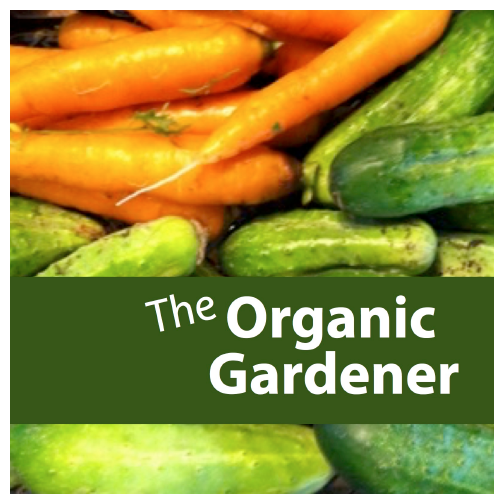

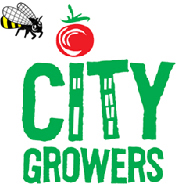 Citygrowers
Citygrowers